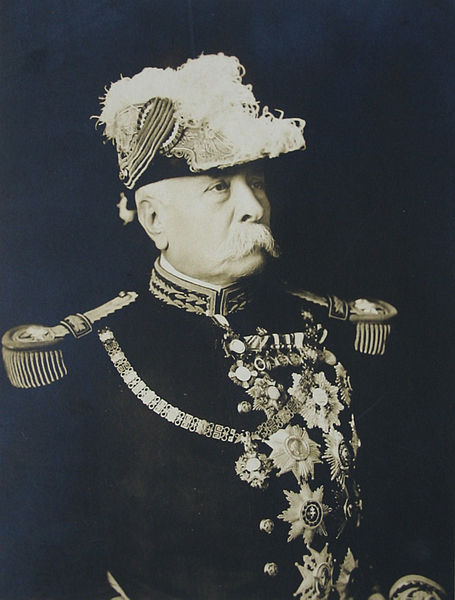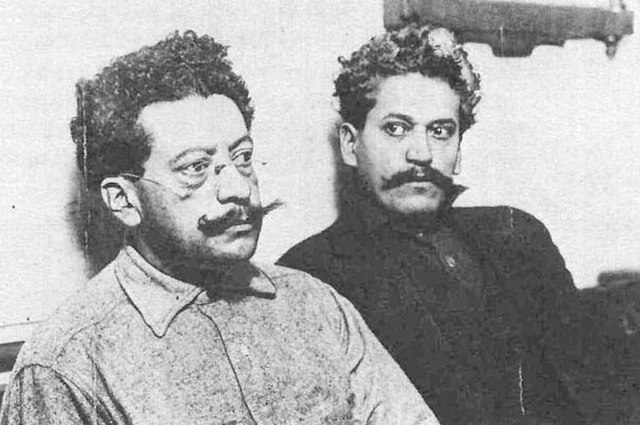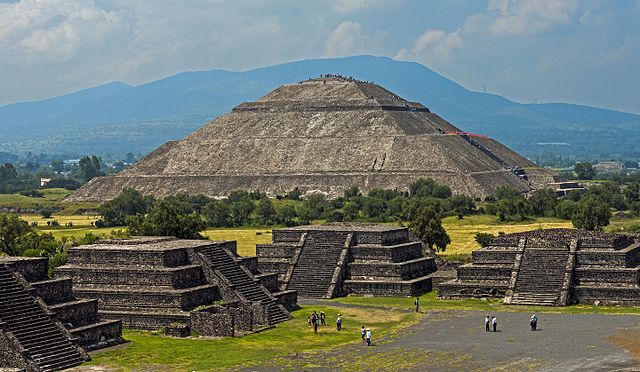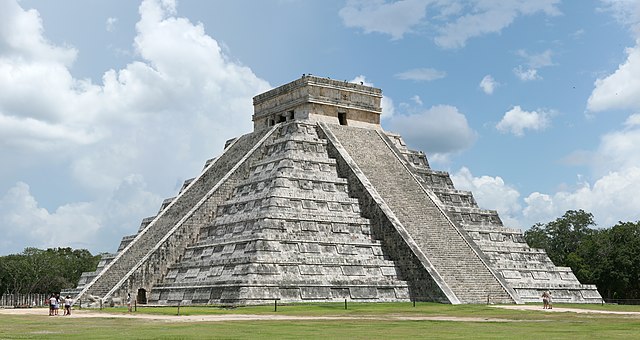The Mexican Revolution was an extended sequence of armed regional conflicts in Mexico from 20 November 1910 to 1 December 1920. It has been called "the defining event of modern Mexican history" and resulted in the destruction of the Federal Army, its replacement by a revolutionary army, and the transformation of Mexican culture and government. The northern Constitutionalist faction prevailed on the battlefield and drafted the present-day Constitution of Mexico, which aimed to create a strong central government. Revolutionary generals held power from 1920 to 1940. The revolutionary conflict was primarily a civil war, but foreign powers, having important economic and strategic interests in Mexico, figured in the outcome of Mexico's power struggles; the U.S. involvement was particularly high. The conflict led to the deaths of around one million people, mostly noncombatants.
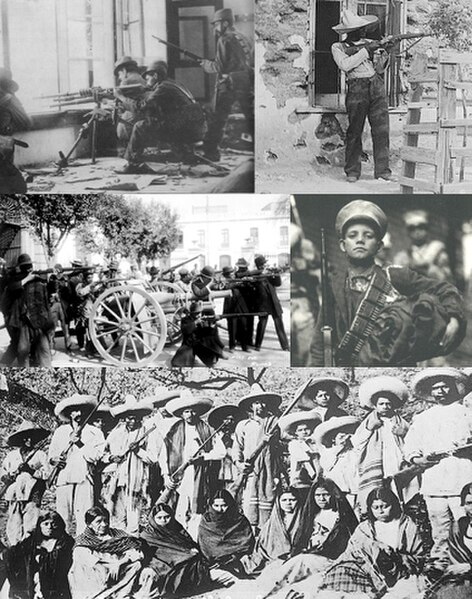
From left to right and top to bottom: Huertista troops insurging against President Francisco Madero, Ten Tragic Days, 1913 Questionable photograph, may come from a 1930s film or be a period production Defense of the government by supporters of Madero, Ten Tragic Days, 1913, Mexico City El Niño artillero (Antonio Gómez Delgado), 10 years old, enlisted on July 2, 1910 in Acatzingán, Michoacán, part of the federal troops commanded by Victoriano Huerta
General Porfirio Díaz, President of Mexico
A banner (1903) at the office of opposition magazine El hijo del Ahuizote reads: "The Constitution has died..." (La Constitución ha muerto...)
Ricardo Flores Magón (left) and Enrique Flores Magón (right), leaders of the Mexican Liberal Party in jail in the Los Angeles (CA) County Jail, 1917
Mexico, officially the United Mexican States, is a country in the southern portion of North America. It covers 1,972,550 km2, making it the world's 13th-largest country by area; with a population of almost 130 million, it is the 10th-most-populous country and the most populous Spanish-speaking country. Mexico is organized as a federal constitutional republic comprising 31 states and Mexico City, its capital. It shares land borders with the United States to the north, with Guatemala and Belize to the southeast; as well as maritime borders with the Pacific Ocean to the west, the Caribbean Sea to the southeast, and the Gulf of Mexico to the east.
Teotihuacan, the 6th largest city in the world at its peak (1 AD to 500 AD)
Temple of Kukulcán (El Castillo) in the Maya city of Chichen Itza
Artistic depiction of Mexico-Tenochtitlan, the Aztec capital and largest city in the Americas at the time. The city was completely destroyed in the 1521 siege of Tenochtitlan and rebuilt as Mexico City.
Storming of the Teocalli by Cortez and his Troops (painted in 1848)


